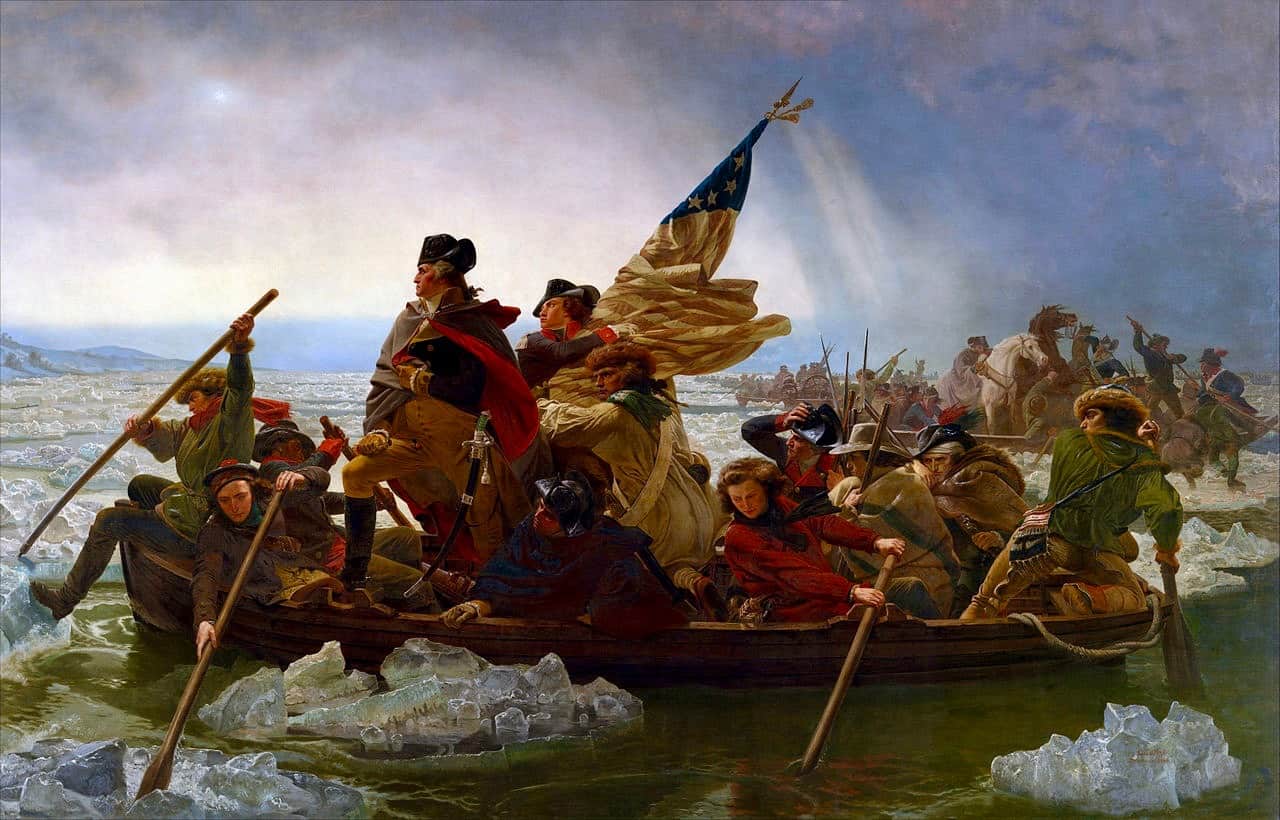In the painting Washington Crossing the Delaware by Emanuel Leutze (1816-1868), an African American is pictured by Washington’s right knee. He is pushing away ice with his oar. Some have suggested that this man is Prince Whipple. While he may not actually have been with Washington for this pivotal event during the war, Prince Whipple did fight in the American Revolution. Oliver Cromwell, another black soldier in the Revolutionary War, also is pictured in Leutze’s painting. He’s in the bow of the boat, with his left leg hanging over the side. Here we will briefly examine the life and contribution of Prince Whipple and uphold him as an example of many other blacks who fought in the Revolutionary War.
According to historian William C. Nell (1816-1874), author of Colored Patriots of the American Revolution (1851), Prince was born to wealthy parents around the year 1750. At ten years of age, Prince was sent with a cousin from Africa to America to America. His parents wanted him to receive an education there, but the captain of the ship sold them into slavery in Baltimore. General William Whipple, from New Hampshire, purchased Prince.
Later, General Whipple would become a signer of the Declaration of Independence. Nell writes that Prince
was emancipated during the [Revolutionary] War, was much esteemed, and was once entrusted by the General with a large sum of money to carry from Salem to Portsmouth. He was attacked on the road, near Newburyport, by two ruffians; one was struck with a loaded whip, the other one he shot…Prince was beloved by all who knew him. He was also known as “Caleb Quotom” of Portsmouth, where he died leaving a widow, Dinah a freeperson and two children.
Even if Prince Whipple did not accompany Washington in his historic crossing of the Delaware on Christmas night in 1776, the black man depicted in Leutze’s painting represents all the blacks who served in the armed forces to secure American independence. Understandably, because most were enslaved, they wanted to lend aid to whichever side would offer them the greater opportunity for freedom. Historian Edward Ayres writes, “Enslaved blacks made their own assessment of the conflict and supported the side that offered the best opportunity to escape bondage.” Yet there were some who saw potential and benefit in helping give birth to a new nation not beholden to England. A good number of
free and enslaved African Americans in New England were willing to take up arms against the British. As soon states found it increasingly difficult to fill their enlistment quotas, they began to turn to this untapped pool of manpower. Eventually every state above the Potomac River recruited slaves for military service, usually in exchange for their freedom. By the end of the war from 5,000 to 8,000 blacks had served the American cause in some capacity, either on the battlefield, behind the lines in noncombatant roles, or on the seas.…
Most black soldiers were scattered throughout the Continental Army in integrated infantry regiments, where they were often assigned to support roles as wagoners, cooks, waiters or artisans. Several all-black units, commanded by white officers, also were formed and saw action against the British. Rhode Island’s Black Battalion was established in 1778 when that state was unable to meet its quota for the Continental Army. The legislature agreed to set free slaves who volunteered for the duration of the war, and compensated their owners for their value. This regiment performed bravely throughout the war and was present at Yorktown where an observer noted it was “the most neatly dressed, the best under arms, and the most precise in its maneuvers.”
Segregation of troops was not the norm. Blacks “fought, drilled, marched, ate and slept alongside their white counterparts. There was never enough food or clothes or even pay for anyone, but they shared their hardships equally.” Military historian Major Glenn Williams has said, “I’ve heard one analysis say that the Army during the Revolutionary War was the most integrated that the Army would be until the Korean War. World War I and World War II both, and of course the Civil War, there were lots of blacks in uniform, but the men were segregated into separate units.”
Overlooking the brave contributions of blacks who fought and died in the American Revolution is an error that must be corrected. At the end of her article her speech (which we cited earlier), Amy Reid suggested that with regard to the issue of the contributions of blacks to American history, “we conservatives are getting wiser and are making some noise.”
We need to understand that there’s a lot of noise to be made.
This page is a part of a larger article.
Copyright © 2016 by B. Nathaniel Sullivan. All Rights Reserved.
